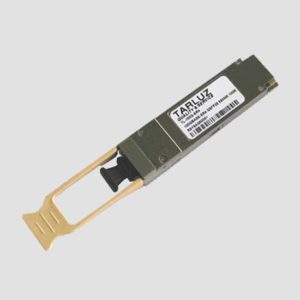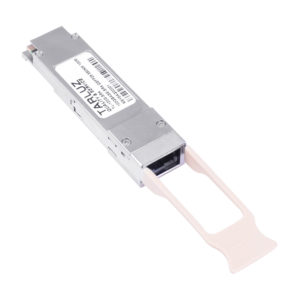The QSFP28 optical transceiver, also known as the 100G optical transceiver, is an important part of the 100G network. It is mainly used in 100G Ethernet and EDR InfiniBand applications, and uses four 25Gbit/s transmission channels to transmit data.
Advantages of the QSFP28 optical transceiver
- small volume. Compared with CFP and CFP4 optical transceivers, QSFP28 optical transceivers are smaller in size;
- The port density is large. Compared with other 100G optical transceivers, the QSFP28 optical transceiverhas a higher port density on the switch. Generally, 36 QSFP28 optical transceivers can be installed on a 1RU switch.
- Low power consumption. Compared with other 100G optical transceivers, QSFP28 optical transceivers have lower power consumption and generally do not exceed 3.5W
Types of QSFP28 optical transceivers
- QSFP28 SR4 optical transceiver
The QSFP28 SR4 optical transceiver is also known as the 100GBASE-SR4 QSFP28 optical transceiver. Since most of the data centers use multimode fiber, IEEE has developed a standard for 100G QSFP28 optical transceivers to support multimode fiber short-distance transmission applications: 100GBASE-SR4. The QSFP28 SR4 optical transceiver uses an MTP interface (8-pin). When used with OM3 multimode fiber, the transmission distance is 70m. When used with OM4 multimode fiber, the transmission distance is 100m, which is suitable for short-distance transmission. The QSFP28 SR4 optical transceiver belongs to Parallel 100G optical transceivers have the advantages of high port density and low cost.
- QSFP28 LR4 optical transceiver
The QSFP28 LR4 optical transceiver is also known as the 100GBASE-LR4 QSFP28 optical transceiver. For 100G long-distance transmission, the IEEE has developed the 100GBASE-LR4 standard for the 100G QSFP28 optical transceiver. The QSFP28 LR4 optical transceiver also uses four fiber channels. The difference is that it introduces WDM technology, which can multiplex the different wavelengths of four fiber channels onto one fiber for transmission. Therefore, the QSFP28 LR4 optical transceiver uses duplex. The LC interface, when used with single-mode fiber, can reach a distance of 10km, providing a solution for the ever-increasing transmission distance of very large data centers..
- QSFP28 PSM4 optical transceiver

The QSFP28 PSM4 optical transceiver, also known as the 100GBASE-PSM4 QSFP28 optical transceiver, features a hot-swappable QSFP form factor and built-in digital diagnostics for high speed and low power consumption. 100GBASE-PSM4 is a multi-source protocol (MSA) developed primarily for 100G QSFP28 optical transceivers. The QSFP28 PSM4 optical transceiver is mainly used for medium and long-distance transmission applications. It uses an MTP interface and can transmit up to 500m when used with single-mode multi-core fiber. It has eight fibers, each with a data rate of 25Gbps.
- QSFP28 CWDM4 optical transceiver
QSFP28 CWDM4 optical transceiver is also known as 100GBASE-CWDM4 QSFP28 optical transceiver. It is mainly used in computing, high-frequency trading and other fields. 100GBASE-CWDM4 is also a multi-source protocol (MSA). QSFP28 CWDM4 optical transceiver also introduces WDM technology. The LC duplex interface can be used up to 2km when used with single mode fiber.
